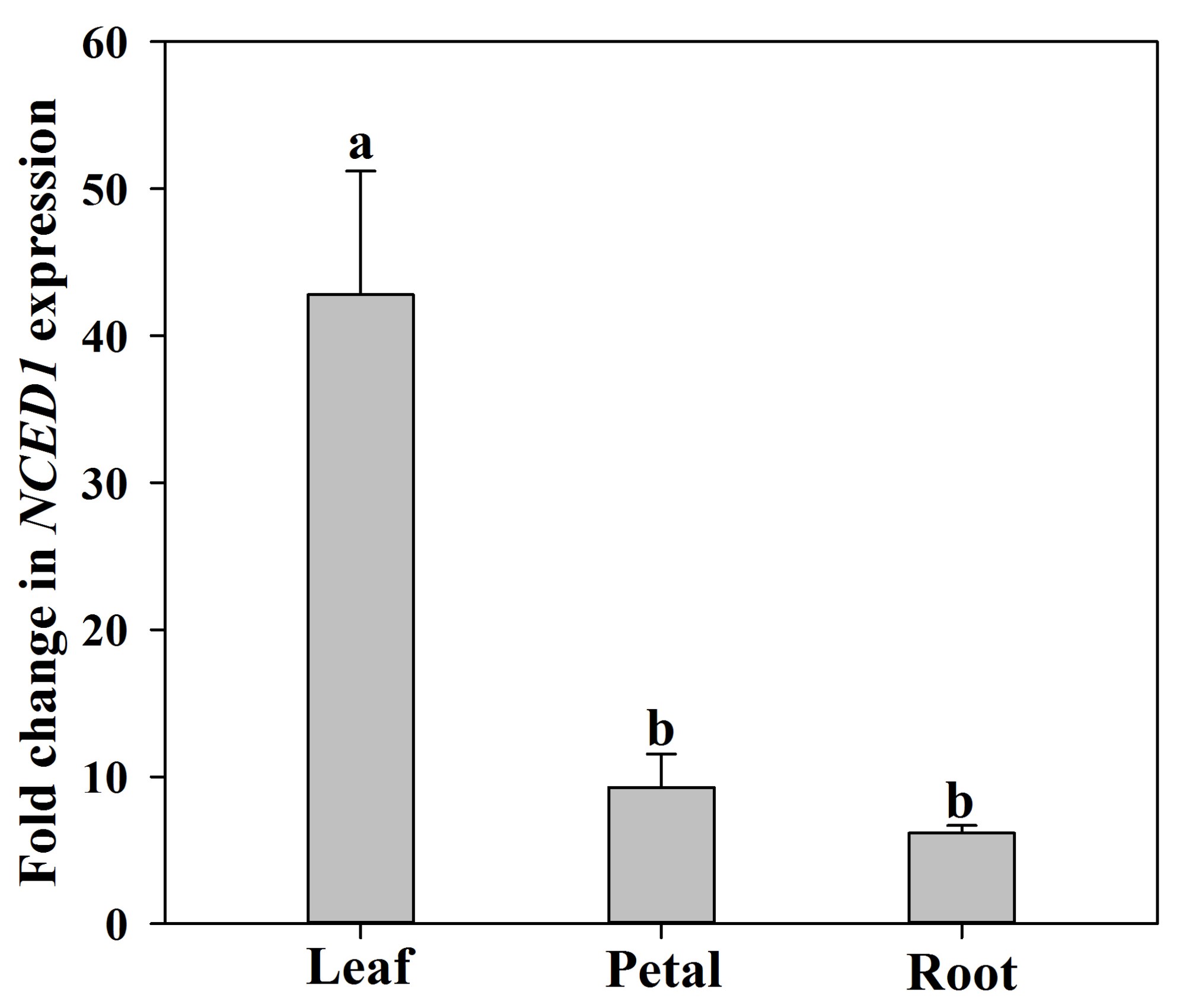The plant hormone abscisic acid (ABA) plays a critical role during many phases of the plant life cycle, regulating plant responses to various environmental signals as well as endogenous cues including water limitation, seed development and dormancy and sex determination.
Unlike leaves, flowers possess unique development processes. Flowers are relatively short-lived, and they do not assimilate substantial amounts of carbon, lessening the need for atmospheric gas exchange and thus high rates of transpiration. Because flowers often face desiccating conditions that would lead to wilting, they must maintain a positive balance between water supply and loss, as well as high turgor throughout flowing.
In addition, it appears that flowers may be more hydraulically vulnerable than leaves, which places even more selective pressure on flowers to maintain minimal water loss rates compared to leaves. Flowers are developmentally independent from leaves, and they also appear to follow different evolutionary trajectories in water transport and vein density. Thus, flowers and leaves may experience different turgor pressures and water balances, and given the limited gas exchange in flowers compared to leaves, there may be no selective pressure to maintain a system for rapid cell volume-triggered ABA synthesis in floral tissues. However, it is not known whether rapid biosynthesis of ABA is triggered in other plant tissues as well.
Recently, Prof. ZHANG Shi-Bao’s group from Kunming Institute of Botany, Chinese Academy of Sciences (KIB/CAS) and Prof. Timothy J. Brodribb from University of Tasmania test whether a reduction in cell volume can trigger rapid increases in ABA levels across plant body in two species Solanum lycopersicum and Passiflora tarminiana by using a novel method of the application of external pressure to flower, root and leaf tissues.
The results show that, in contrast to rapid ABA synthesis in the leaf, flower and root tissue did not show a significant, rapid increase in ABA level in response to a drop in cell volume over a short time-frame, suggesting that fast ABA biosynthesis occurs only in leaf, not in flower or root tissues.
A gene encoding the key, rate-limiting carotenoid cleavage enzyme (9`-cis-epoxycarotenoid dioxygenase, NCED) in ABA biosynthetic pathway in S. lycopersicum, NCED1, was unregulated to lesser degree in flowers and roots compared to leaves in response to applied pressure.
In both species, floral tissues contained substantially lower levels of NCED substrate 9`-cis-neoxanthin than leaves, and this ABA precursor could not be detected in roots. Slow and minimal ABA biosynthesis was detected after 2 h in petals, indicating that floral tissue is capable of synthesising ABA in response to sustained water deficit.
The results indicate that rapid ABA biosynthesis predominantly occurs in the leaves, and not in other tissues. The results further add to a growing body of evidence that has suggested ABA is not substantially synthesized in roots, challenging a long held dogma that roots are the primary source for the synthesis of ABA.
The study entitled “Leaves, not roots or floral tissue, are the main site of rapid, external pressure-induced ABA biosynthesis in angiosperms" has been published online in Journal of Experimental Botany.
The study was supported by the National Nature Science Foundation of China and a visiting scholarship from Chinese Academy of Sciences.

Fig. 1 The mean change in ABA level (n = 3, ± SE) for leaves, roots and flowers, including floral parts, of Solanum lycopersicum (A) and Passiflora tarminiana (B) after 30 min of applied external pressure. (Image by KIB)

Fig. 2 The mean levels of the carotenoid 9`-cis-neoxanthin (n = 3 ± SE) in leaves, roots and flowers, including floral parts, of Solanum lycopersicum (A) and Passiflora tarminiana (B). Different letters denote significant differences between means. n.d., not detectable. (Image by KIB)

Fig. 3 The fold change in relative expression of the NCED1 gene in leaf, petal and root of Solanum lycopersicum after 30min of applied pressure (n = 4, ± SE). Different letters denote significant differences between means. (Image by KIB)
Contact:
YANG Mei
General Office
Kunming Institute of Botany, CAS
Email: yangmei@mail.kib.ac.cn
(Editor: YANG Mei)







